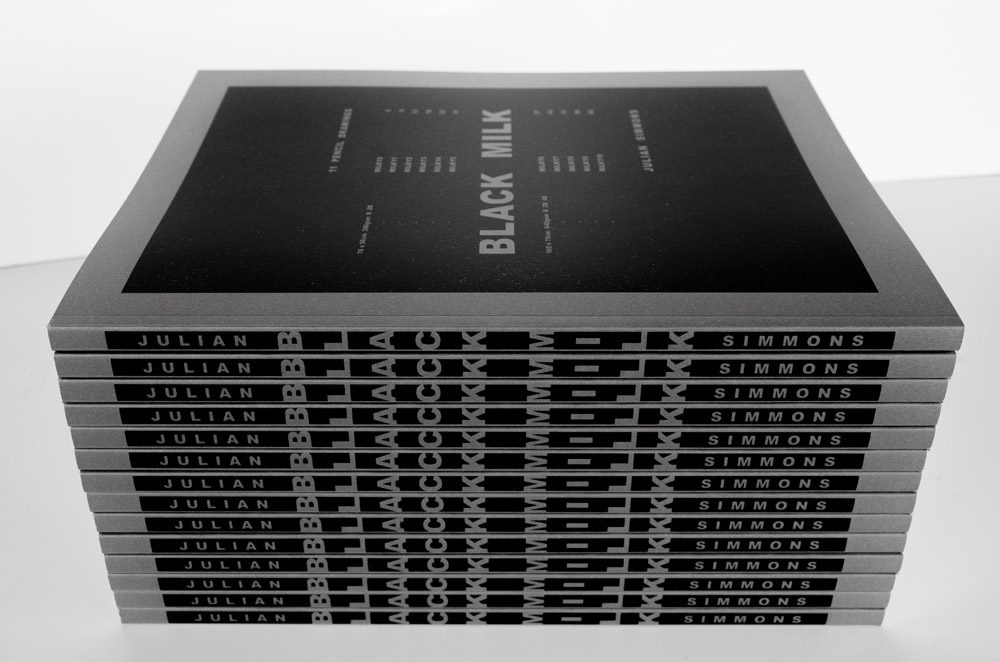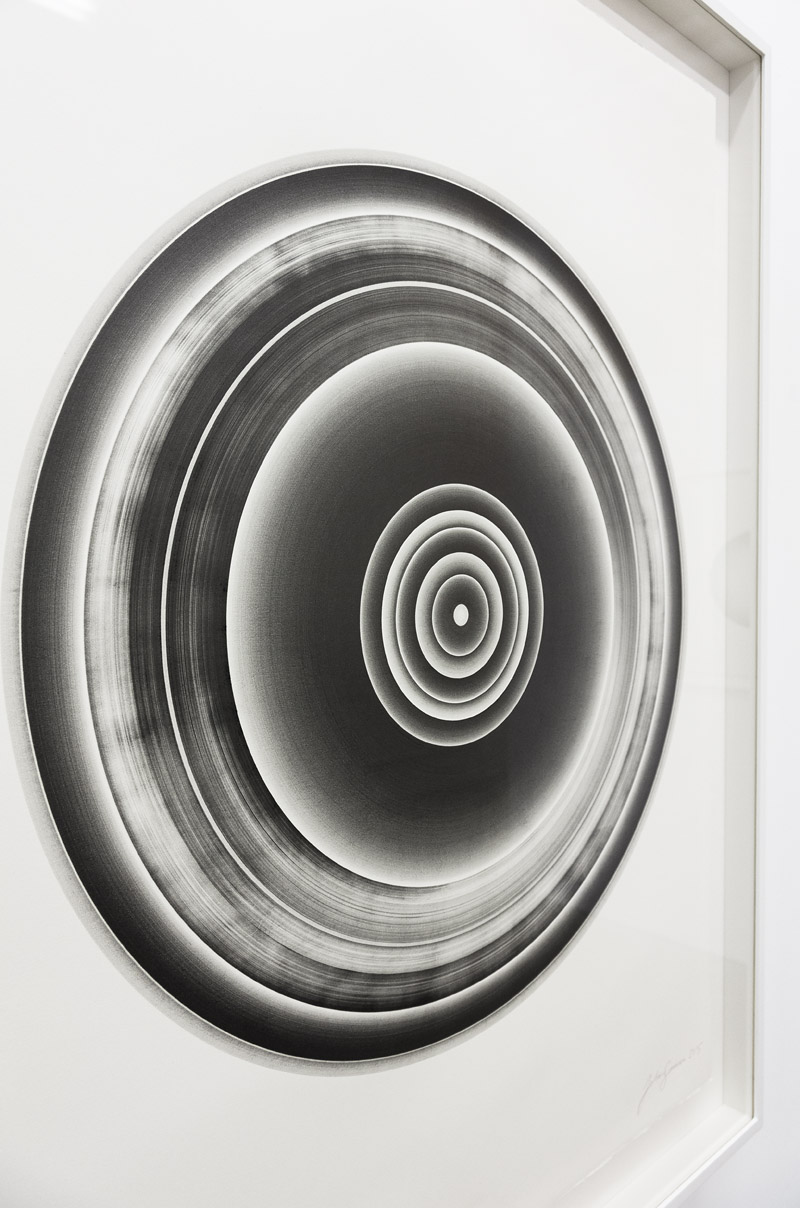 |
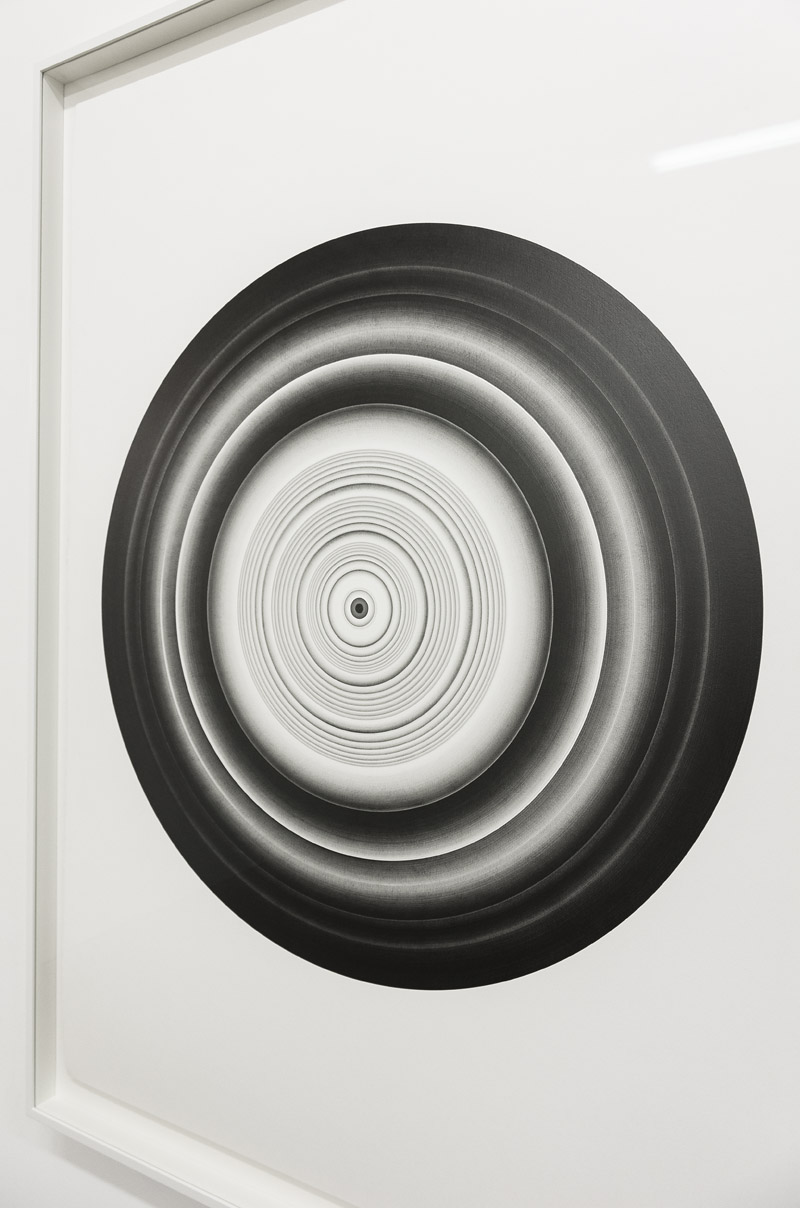 |
New Series of 11 Drawings
Sheet : 105 x 75cm 640gsm (x 5), 76 x 56cm 300gsm (x 6); graphite on 100% cotton Fabriano.
Frame : 113.5 x 83cm (x 5), 86.5 x 66.5cm (x 6); welded aluminium, powder-coated; AR museum glass.
Publication
BLACK MILK, 30.6 x 23.7cm, 72 pages.
Lychee One, 38-50 Pritchards Road, London E2
Tues – Sat, 25 November – 22 December 2015, 12 – 6pm
JS: “In each between 75,000 and 150,000 feet of graphite line, 15 – 30 miles of tone and bare intention; in all 11 drawings probably over 200 miles …just off Hackney road.”
“How long does it take to make each drawing?”
JS: “I’m often asked that. It’s near to hypnotic limits, …a couple of weeks, though ultimately that’s not of any import. The show is titled ‘NOW’: my experiment is to take time out of the equation, amplitude is key. So I’m referring to X and Y; amplitude – the Y [axis] – brightness, intensity, and when adding another dimension ‘the X’ – which we generally ascribe to time, provides the possibility of fluctuations in intensity – to be recorded and appear as a frequency. We experience this as colour. Basically, colour is built upon rapid variations in brightness caught in another dimension. It’s mysterious, but removing colour in some way decouples our correspondence – or adherence, with time. This could be handy later on.
I recall the Tibetan concept of the cosmos – especially the entirely circular Kalachakra, with it’s various diameters measured precisely in variable units; I’ve always been curious that a philosophy of consciousness can be measured so specifically and elastically! I’m not a whole-sale advocate of any philosophy, except the mind behind.”
“I notice you always write your titles in uppercase.”
JS: “Yes, of course words are primarily visual, their abstract shapes are stronger in uppercase – in the original full-height form of their characters. NOW has a circle at it’s centre – ‘the target of now’ and is surrounded by the saw-tooth-waves of N and W. I’m amazed how this passes people by, so often my titles are quoted in so-called ‘title-case’ – which is not only messy, but loses the abstract presence of the word.” [Addendum: ‘now’ crops-up in titles… ‘Choices Up Now’, ‘Art Now’, ‘Drawing Now’, etc, though as far as I’m aware, NOW hasn’t before been used as the sole title of an exhibition. Six months on from NOW, and a second instance has emerged: Jeff Koons’ exhibition ‘Now’, at Newport Street Gallery.]
“You’ve referred to yourself as a ‘Milkmaster’?”
JS: “I’m Milking the Mystical.”
“Cosmic Eye?”
JS: “…yes – and Celestial Breast!
…and it goes without saying – Self-portrait; they are microcosmic. Nothing has ever looked at you like this.
I can’t recall seeing a two-dimensional work – drawing or painting – that so acknowledged it’s existence by being viewed at an acute angle.
They exist for the not-flat – for not being themself – while being the only agent of themself; when drawing I focus upon the image that hovers above the paper – the undrawable part. Perceptual mirrors? mirrors of consciousness? …I’m not sure how to place them, but they are something strange, powerful, positive, and addictive to the self – operating on similar terms to a chemical device.
“In their recording they seem to have transposed your mind onto a sheet of paper, which plays itself back when observed – such that you wonder if there is someone else in the room.”
JS: …quite, or some mind else …the mind behind.
‘The frame of mind one might need to inhabit in order to cover 200 miles in pencil is suggested in the vague, trippy tone of Simmons’ explanation for the works, in which the “Tibetan concept of the cosmos” is briefly mentioned, alongside the “Celestial Breast”, and the “Cosmic Eye”. These terms allude to a state of consciousness that isn’t founded on logic or reason, but on another kind of cognition which is rooted in the spiritual, or the meditative, or the hypnotic.
Many years ago, Henri Michaux made a name for himself by ingesting mescaline and drawing the results. Through his hysterical scribbles we can observe his obsessive commitment to following the impulses of his mind and to produce, again and again, the same line. Where Michaux’s drawings were wild and deranged, and Simmons’ are obsessively well ordered, we see in both artists’ work the mysterious attraction of automated drawing. Whether or not he is “Milking the Mystical” (as Simmons suggests), this show speaks to the enduring practice of taking a fine-tipped pencil to paper in an attempt to diagram the workings of a mind’, Emma Capps, 200 Miles of Graphite, Art Collector Magazine.
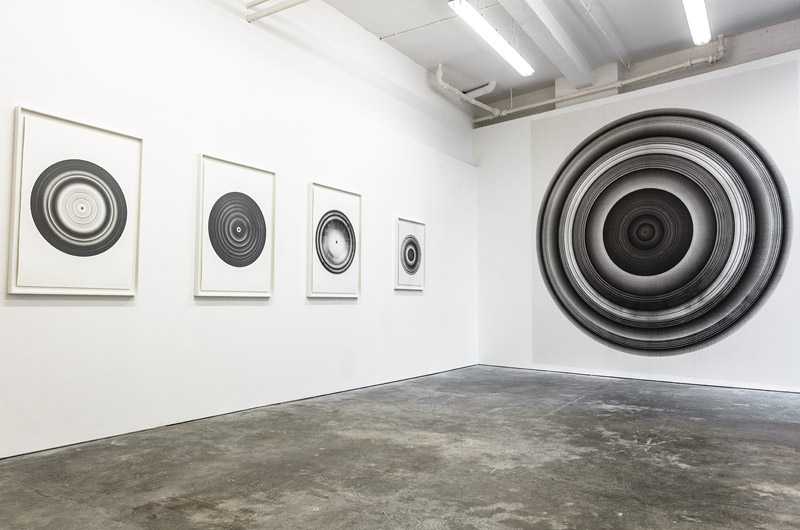 |
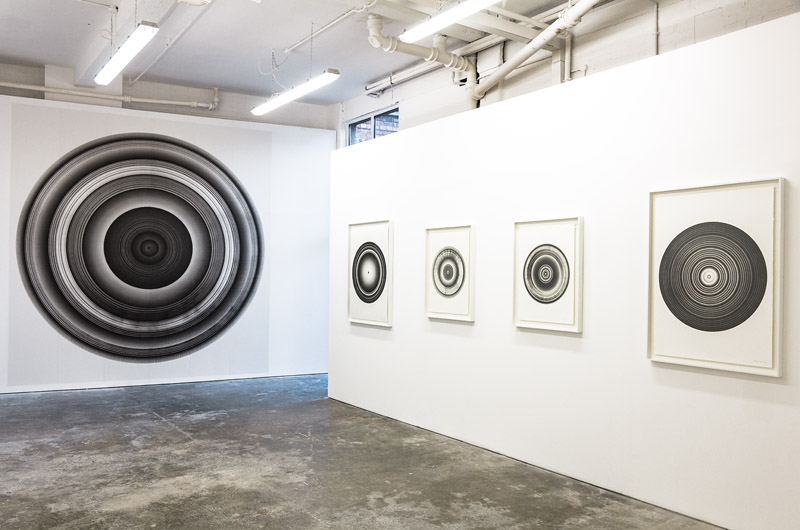 |
CHOICES UP NOW, top-ten London contemporary art show :
‘Julian Simmons is best known for the films and photographs he has produced with – and of the work of – his partner, Sarah Lucas. Here he asserts himself through eleven intensely detailed meditative graphite drawings of concentric circles (if that doesn’t sound terribly assertive, consider that the biggest has a diameter of ten feet). Their resounding lineations conjure enlightenment, itinerant shadows and – given that they resemble eyes and breasts by duck-rabbit turns – a little bawdy comedy. The tone carries through into a handsome book, in which Simmons’ musings resonate with his milking of the mystical and he does a remarkable job of photographing pancake-flat drawings to make them look three dimensionally and celestially spatial’, Paul Carey-Kent, writer and curator.
‘On Saturday I had the great pleasure of going far East to the exotic Lychee One Gallery – (love lychees!) – and finding there just in time your beautiful exhibition – the drawings really are very special and genuinely spiritual as they move – quite literally as objects – from being as Mandalas from Tibet, then again to resembling colourful flowers – for all their black and whiteness or rather many shades of grey, and as the eye pupil that gives its own unique bonding between it – the drawing and little me the viewer – and finally their very particular contemporary virtuosity achieved by the gentle magic of your hand and the graphite. They are all very levitating’, Norman Rosenthal, curator and art historian.
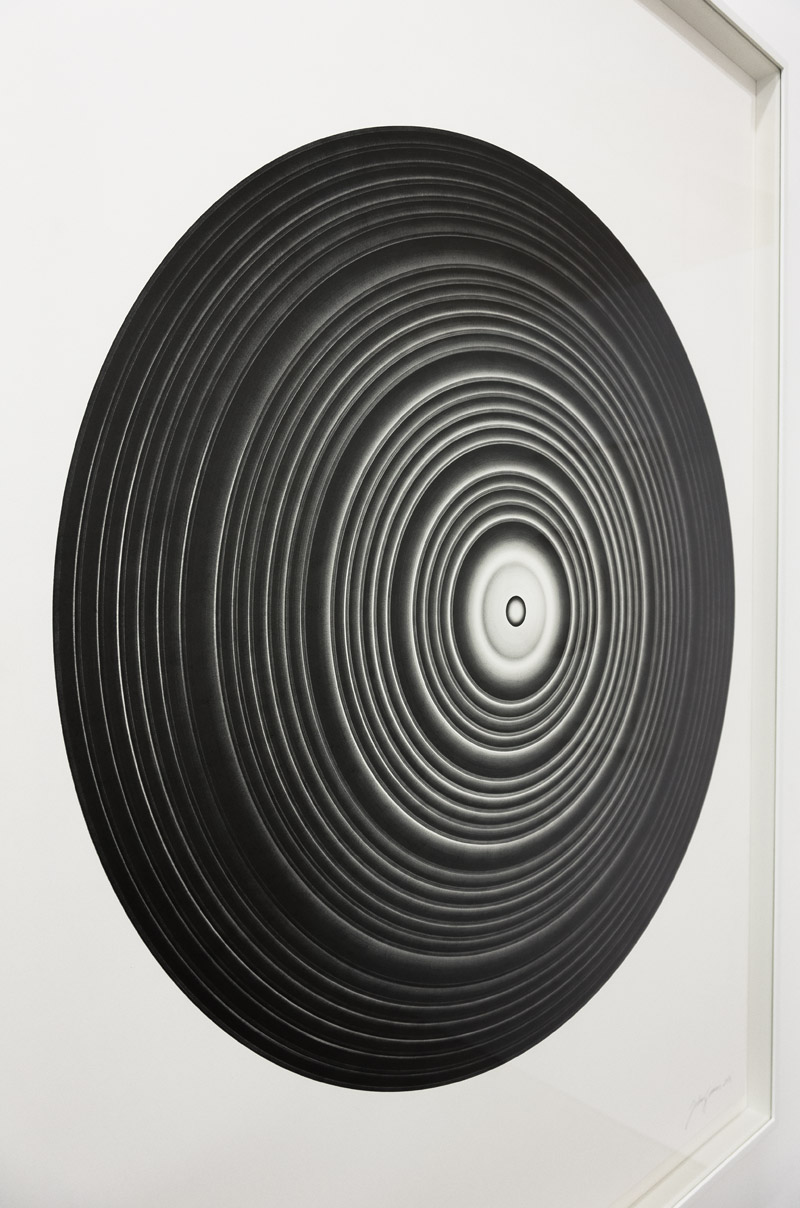 |
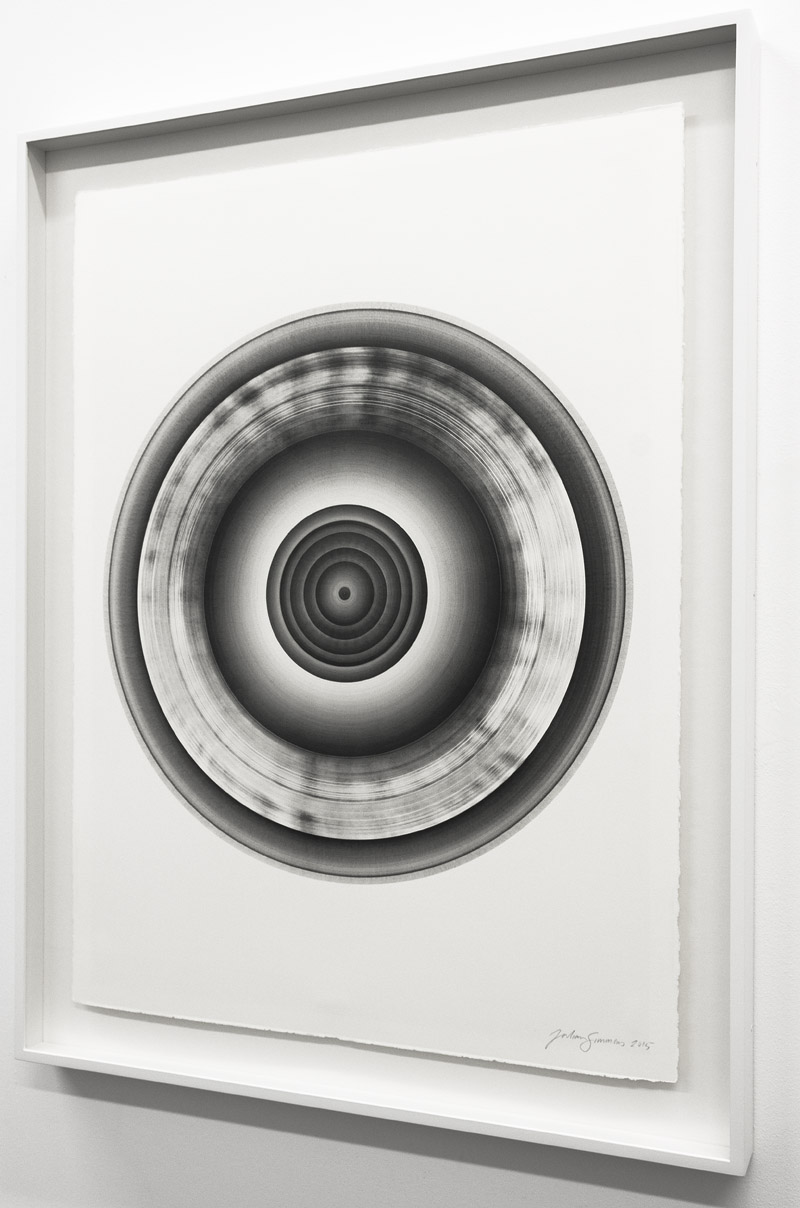 |
Eyes and breasts, not so dissimilar …aesthetically, though formally… one takes energy, the other gives; not entirely, both ways since you enquire.
For the most part …most of the time, what is an eye looking at?…
another eye!
…or maybe a nipple.
So I was imagining flowers again, the attraction of symmetry, radial, orbicular.
I’ve always been fascinated by the yoni bases of lingam stones. The lingam often standing for itself – of course, though properly, standing within a yoni base – often overlooked. However attractive a sculptural identity the lingam is, the yoni base always has my attention. Not for sexual reasons – though I wouldn’t be so prudish to rule that out, no, it’s something that I recall about leaves, large receptacles – to cup a ray of the sun.
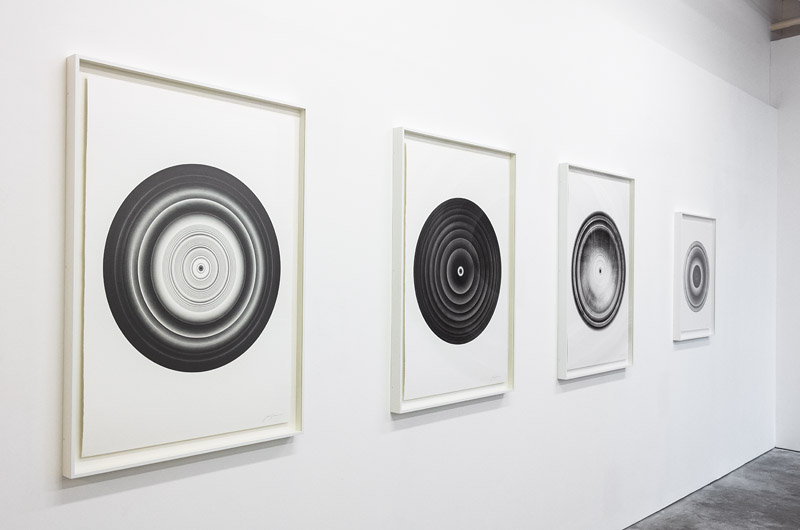 |
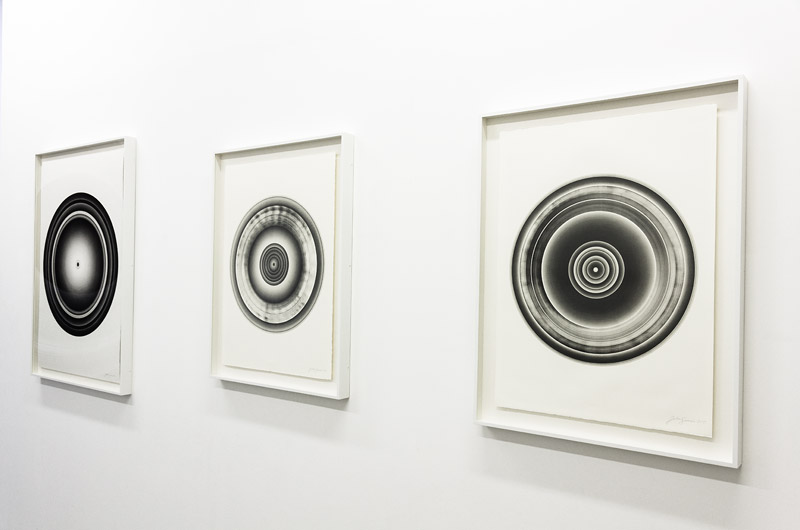 |
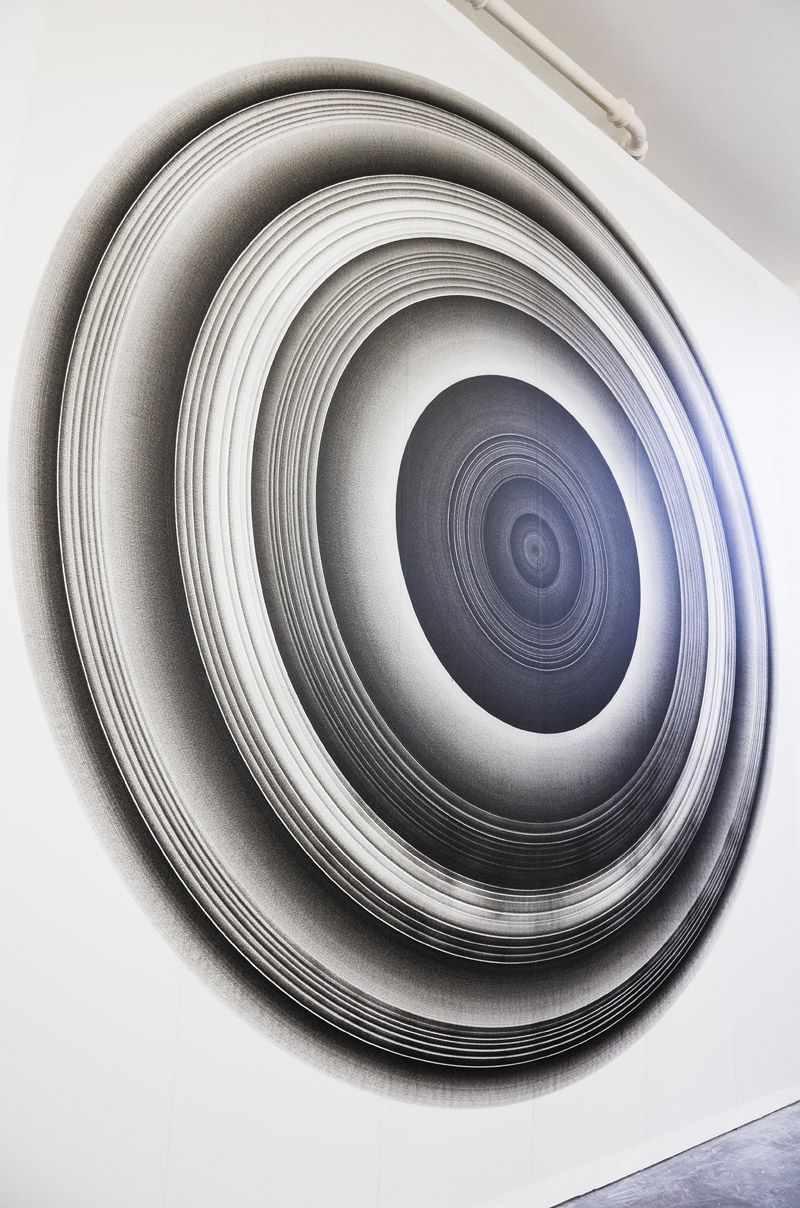 : MILKY2 MAGNIFICATION
: MILKY2 MAGNIFICATION
6-strip wallpaper print, 352 x 327cm (h x w), carbon ink, edition of 4.
How a classical composer …repeats motifs, and so experiments and travels further with them, I have found a sphere that I return to…
at it’s centre are layers – flower-like, discs, the very focus of which may be ambiguous or prominent, in anycase the darkened interior aspect of the centre is most important.
Then surrounding; a sphere, a breast, a body, maternal-material.
Then something collecting, orbiting, rings of dust.
Beyond and outside that, uninterrupted matter.
Beyond that, a substrate or some seamless atmospheric liquid – a narrow band of taught sea,
this is the form I return to.
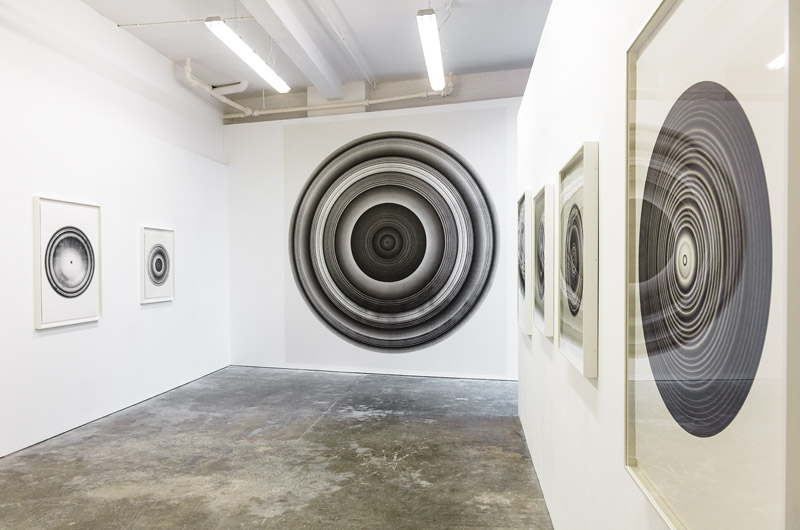 |
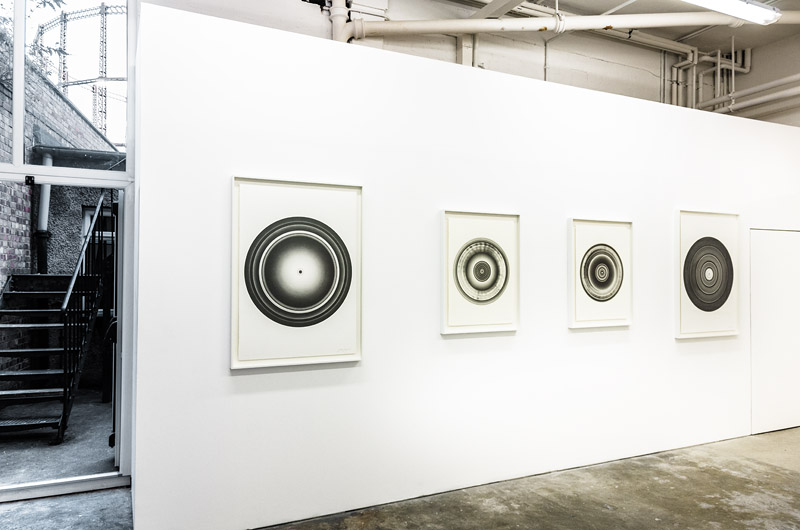 |
|
Supporting text by Jonathan Miles : JULIAN SIMMONS : WITHOUT HORIZON “Perhaps it is an ability to touch, in the darkness, this coming elsewhere, this breaching of time, of space, and of all orientation, that will have defined a character trait specific to modernity. Modernity knows itself to be exposed (this is both a threat and a desire) to what is not itself and is not there, but is nonetheless very close or continually approaching.” Jean-Luc Nancy, A Finite Thinking. There is a point at which the lines begin and the lines end. This decision at either point is suspended in space, the pure space of beginning. The lines that accrue in- between weave together to form to create an oscillating pattern that fluctuates between image and figure. This could be described as the difference between visibility and pulsation or between form and force. Something is moving and never stops moving. Forces have been assembled and then released. A moving being. The Japanese Zen drawing of an Enso could be described as a one second drawing that capture through a single gesture the essence of the notion that all is mind. These drawings are nuanced in another way namely that the oscillating frequency of finite and infinite is mirrored in the working of the mind. We might think of mind as existing between two points drawing a continuous line in between but then we are subject to illusion. Simmons is going round and around to meditate upon such an illusion and suggest another figure. The practice of doing this is what leads to the discovery. Abstractly such perception does not occur of its own violation. These drawings present what representation cannot grasp. They are drawings that stage the dissolution of a horizon. Attending a sound performance by Simmons recently at Cafe OTO, there might have been a like apprehension of sound filtered through a vacuum of silence that reached its audience through filters locked at the other side of technological amplification. It suggested that eyes might be closed, in order to be looked upon instead. The work might appear both intimate and close up to us and yet contain an almost bitter aftertaste introduced by a strange spinning remoteness. What is at stake here is that the work installs within us. A rare dialectical reversal indeed. Imagine a mental space in which the diagrams of Robert Fludd (1534-1637), the Suprematism of Malevich, Tibetan Mandalas and Modernist Monochromes coalesce into a single form. Although not an exercise such as this it nonetheless points to a complex imaginary of temporality and figure that disturbs the flaccid circularity of the contemporary.
|
In his novel ‘White Noise‘, Don DeLillo said: “The power of the dead is that we think they see us all the time.” It is not such a disembodied eye (like those of Redon) that might look back us in these drawings but the portrait eye of the artist woven into the infinity of space. This is a look composed far beyond the region of the dead. Light touches and weighted thoughts co-mingle with ease. Miles and miles of line: constant alertness of the mind. The graphite dust still collects in the fabric of the paper. Not everything falls downwards: something falls upwards as well, although there is no evidence of this. The drawings figure that which is without evidence. There is a paradox contained with the appearance of these works between the figure of ‘at the same time’ which is an outcome of attaching a naming of the thing in question and the idea of event which transforms what follows next. Kiaros (generation) is such a rupture in time and as such opens temporality. Antonio Negri states that: “Kairos is the modality of time through which being opens itself, attracted by the void at the limit of time, and it thus decides to fill that void”, Antonio Negri (2003), Time for Revolution Continuum. Thus the work places us on the brink or edge and yet sucks us into a centre. This points to the fixing of the gaze and within this experiences the potential leap into the yet to come. Suspensions, oscillations, pulsations: the figure forms and deforms, circling around, drawing in and pushing out, constructing and discharging, forever restless but with a still point also. Everything appears back to front. We progress from fullness to the void. When at the centre we are on the edge. The passage that is before us, installs in ways that precedes our constitutive power of seeing. The drawing is a drawing that undoes common sense. A new way of sense then comes but falling upwards. That it is art is registered in all of this and trembles on the edge of this being so. Besides being composed of lines and dust these drawings collect many different winds. Some of the winds blow from an archaic region of deep time, some cross winds swirl around the present, others spiral outside of their own orbit. Time, wind, dust and lines joined within a (chaos) matrix reaching out for a point of emergence. Drawings on a wall : that is all. Jonathan Miles, 2015. |
‘Incredibly powerful works.. they’re totally speakers! – I actually remember pulling the covers off as a kid, sitting mesmerised by the vibrations and badly poking into the divine skin.
They also reflect so many eastern cultures’ spiritual symbols; and the power of meditation.’ Chantelle Smith, Starkwhite Gallery, New Zealand.
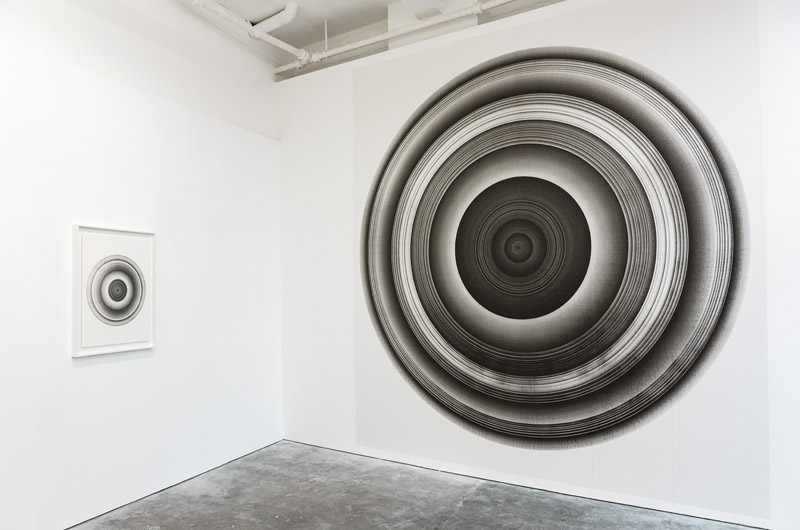 |
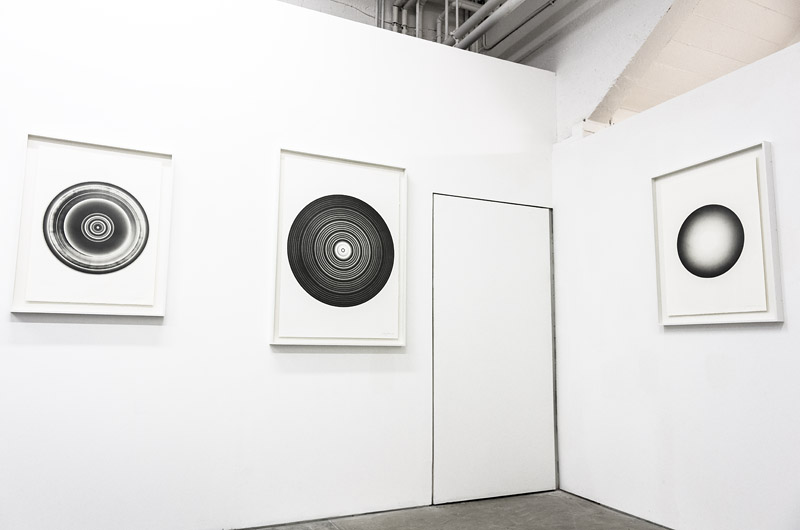 |
‘Bloody
Powerful
Delicate
Speedy
Peaceful
Breathy
Loud’, Maggi Hambling CBE.
The 11 Orbicular Drawings :
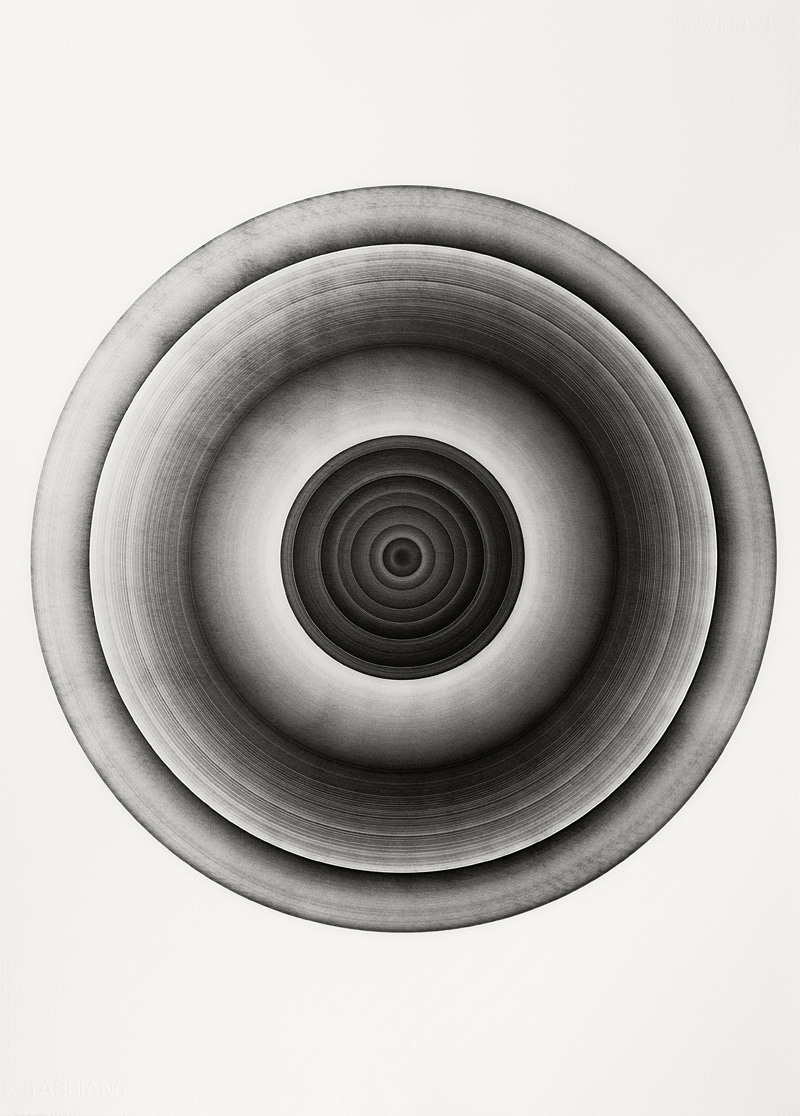
: MILKY0, graphite on 76 x 56cm 300gsm Fabriano paper, unique, signed & dated [sold]
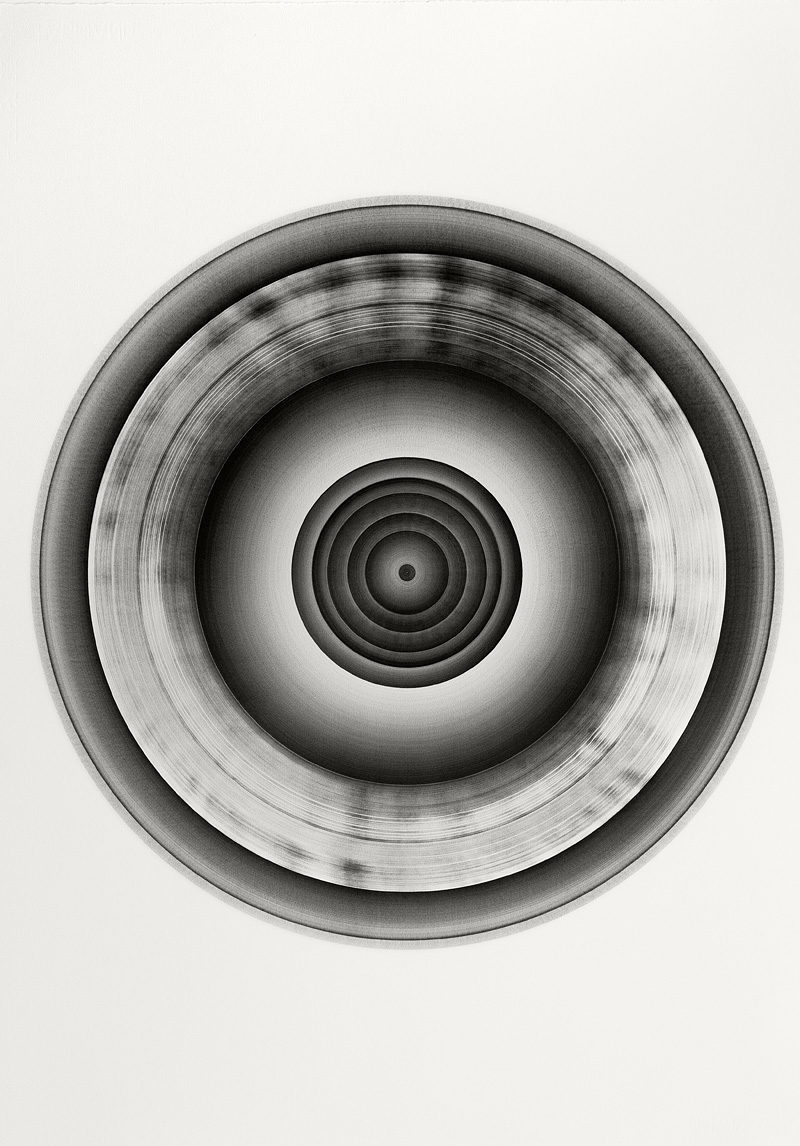
: MILKY1 (see also MILKY4), graphite on 76 x 56cm 300gsm Fabriano paper, unique, signed & dated [available for purchase, framed]
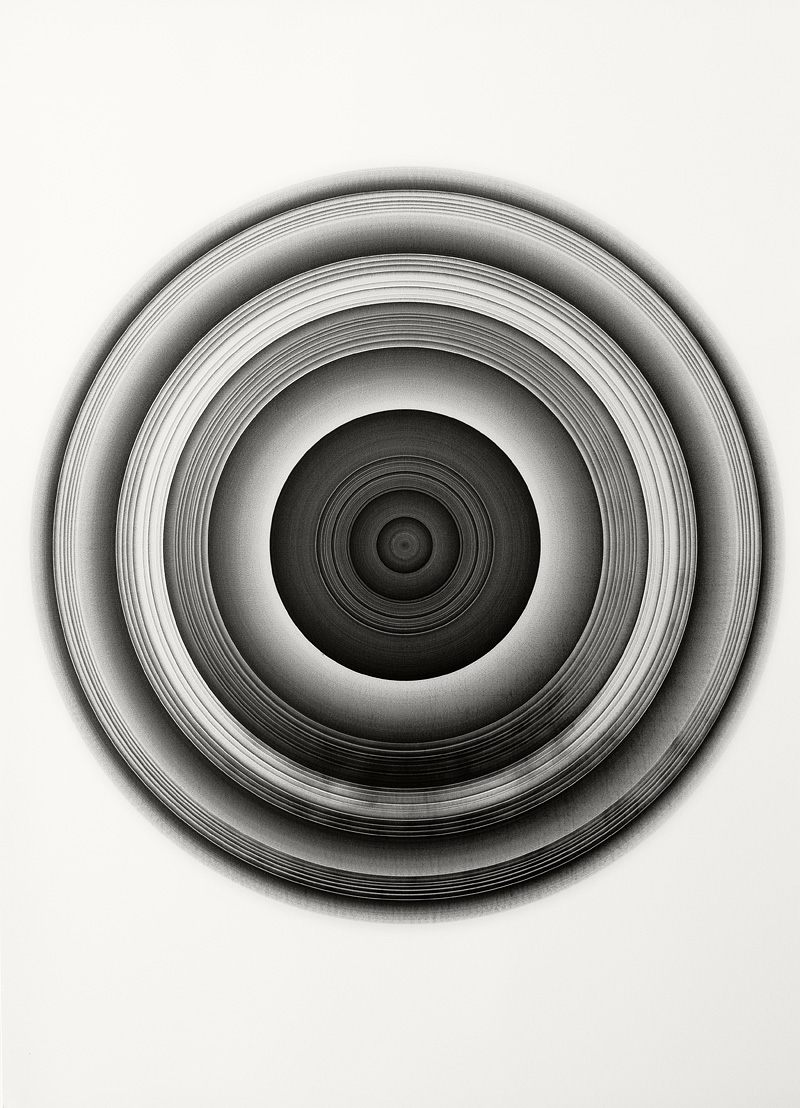
: MILKY2, graphite on 76 x 56cm 300gsm Fabriano paper, unique, signed & dated [available for purchase, framed]
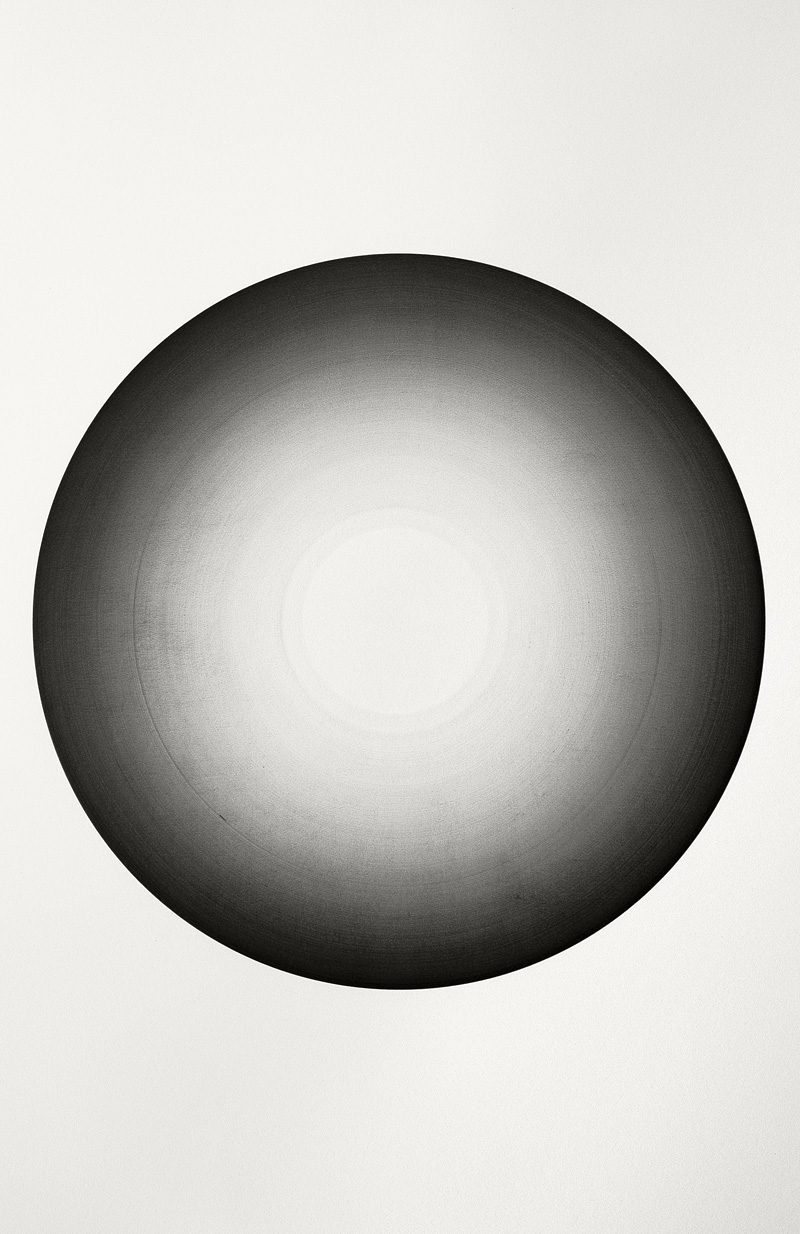
: MILKY3, graphite on 76 x 56cm 300gsm Fabriano paper, unique, signed & dated [sold]
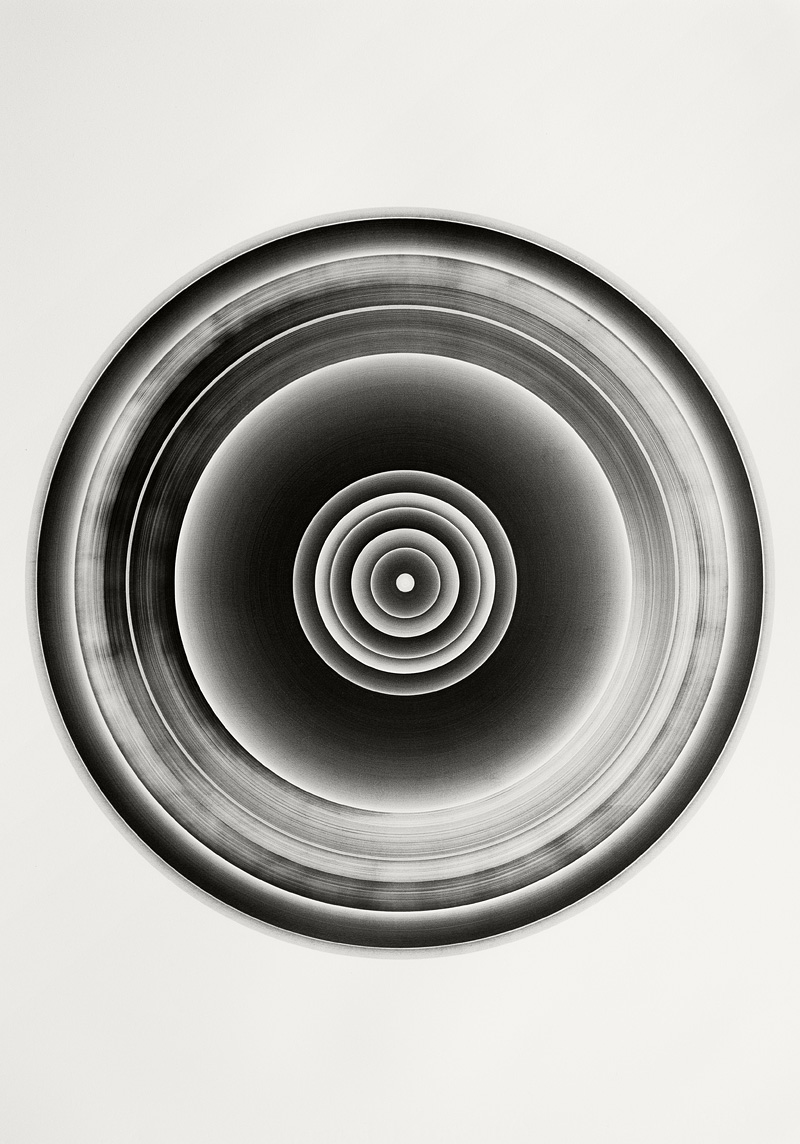
: MILKY4 (negative-tone of MILKY1), graphite on 76 x 56cm 300gsm Fabriano paper, unique, signed & dated [available for purchase, framed]
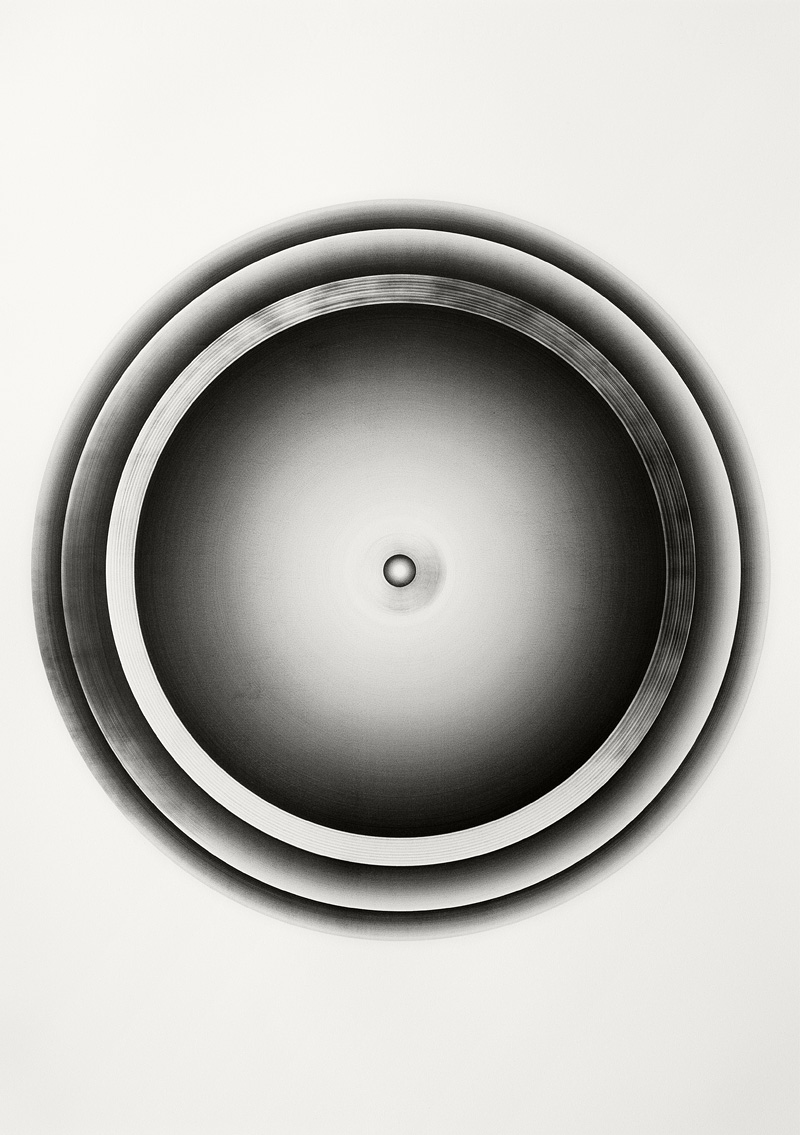
: MILKY5, graphite on 76 x 56cm 300gsm Fabriano paper, unique, signed & dated [available for purchase, framed]
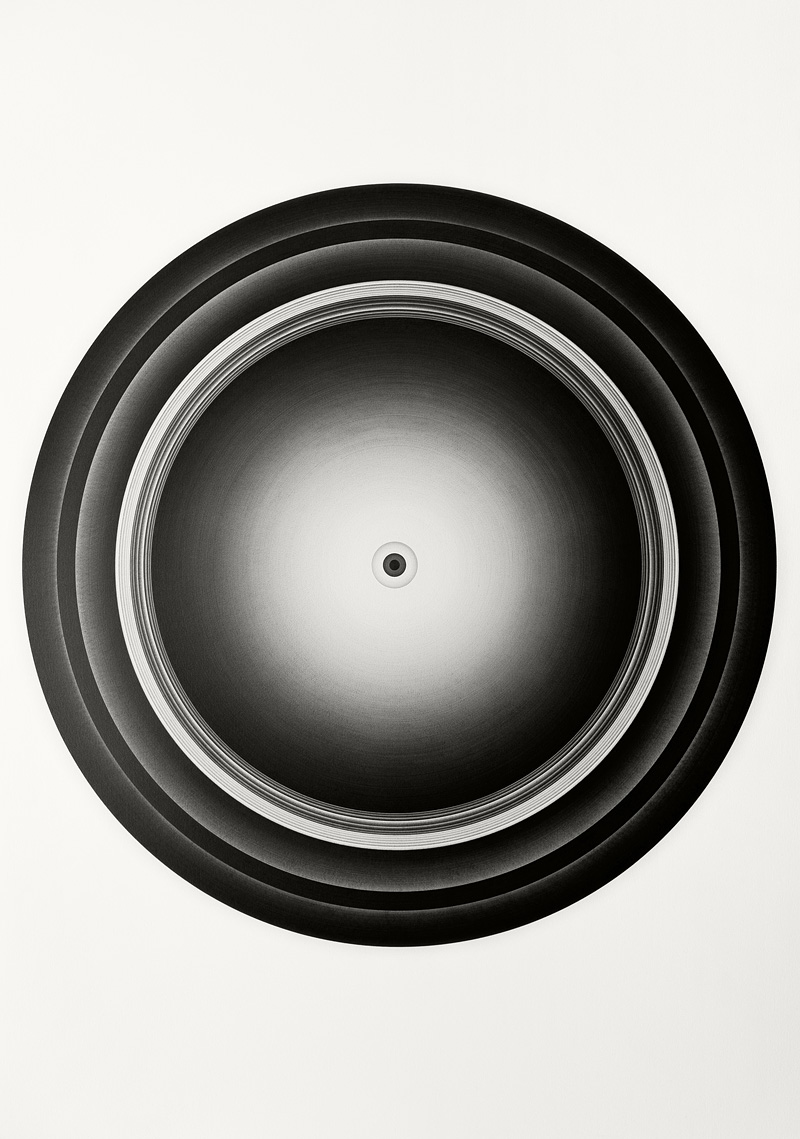
: MILKY6, graphite on 105 x 75cm 640gsm Fabriano paper, unique, signed & dated [unavailable / collection of the artist]
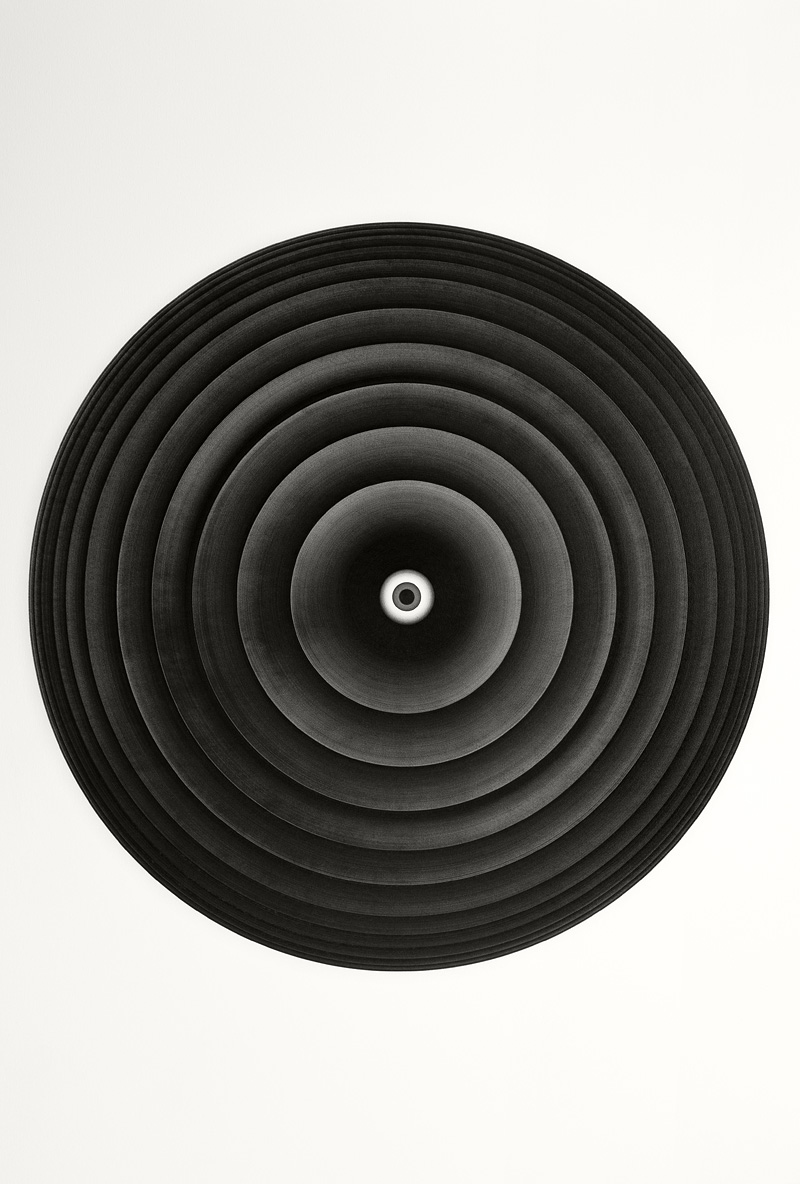
: MILKY7, graphite on 105 x 75cm 640gsm Fabriano paper, unique, signed & dated [sold]
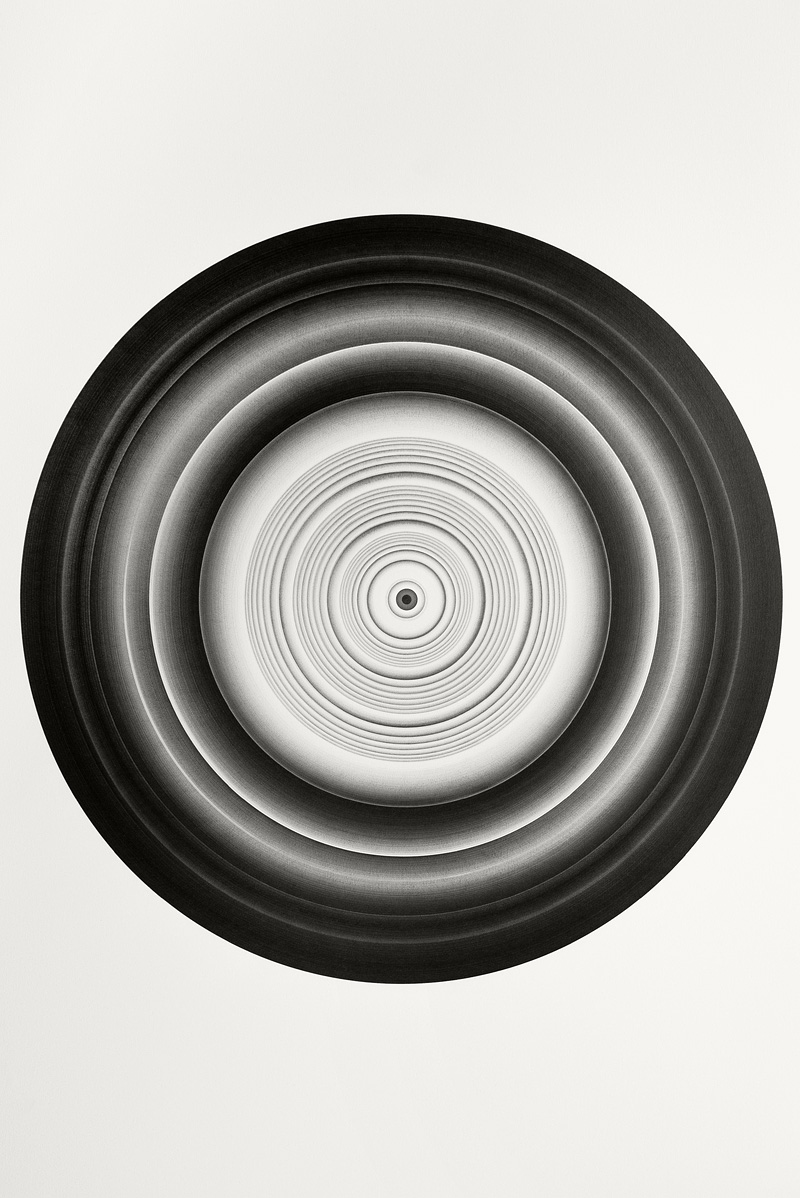
: MILKY8, graphite on 105 x 75cm 640gsm Fabriano paper, unique, signed & dated [sold]
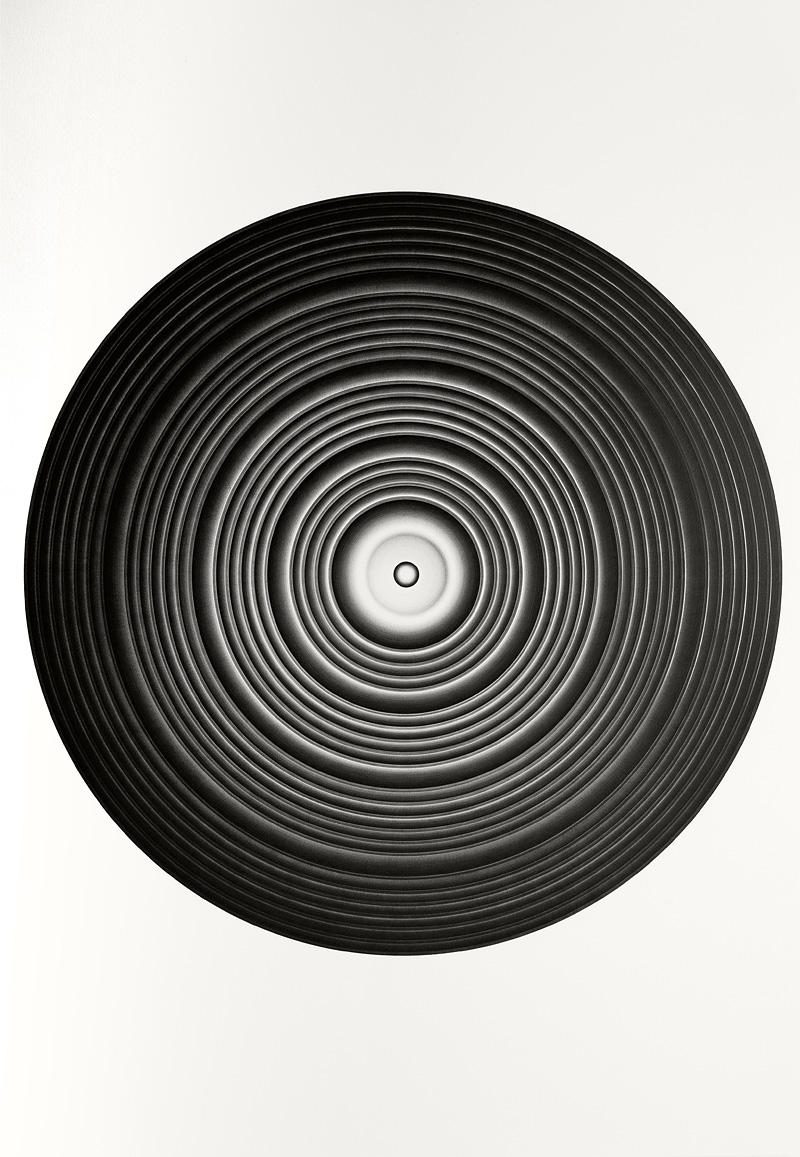
: MILKY9, graphite on 105 x 75cm 640gsm Fabriano paper, unique, signed & dated [sold]
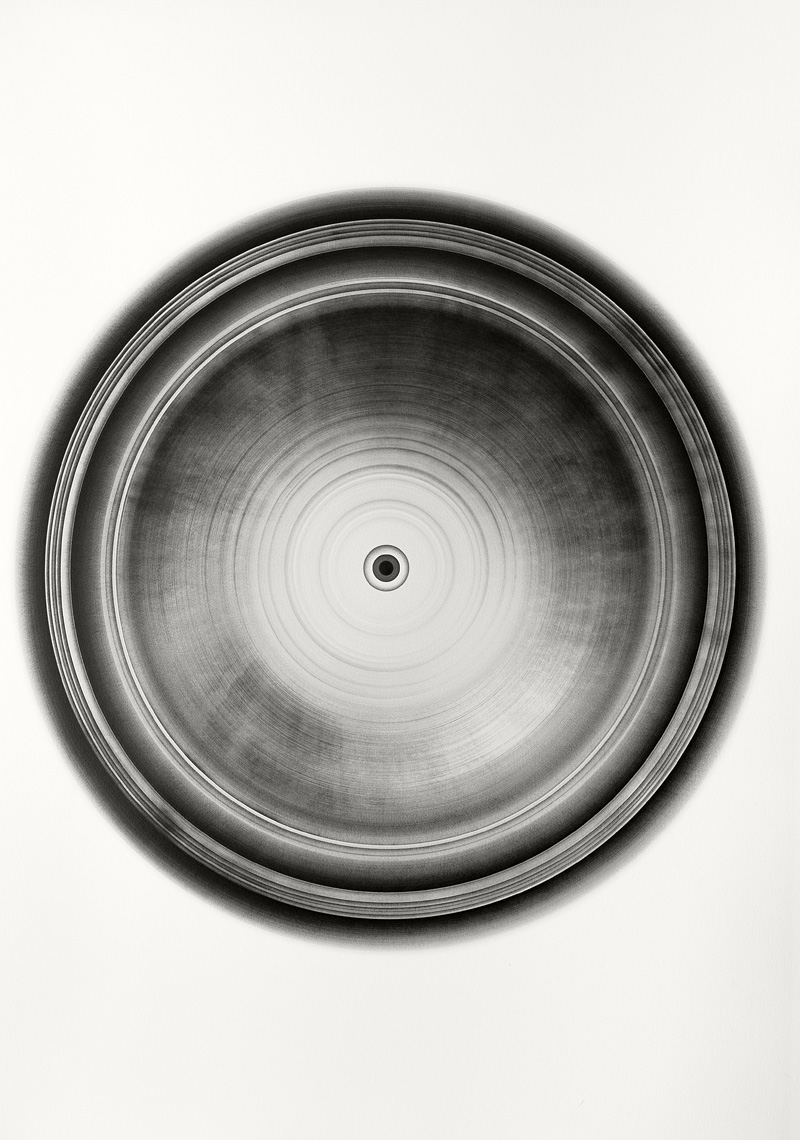
: MILKY10, graphite on 105 x 75cm 640gsm Fabriano paper, unique, signed & dated [sold]
Current availability of Orbicular Drawings, email enquiries to Julian Simmons
Publication : BLACK MILK
